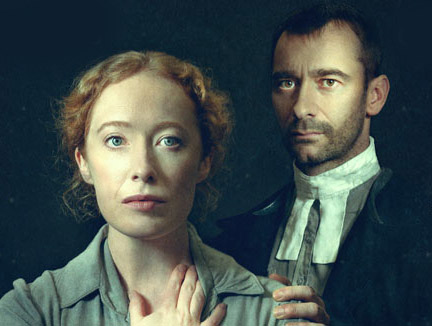
Firstly, I have to declare an interest and say I am a big fan of Arthur Miller. The holy trinity of All My Sons, Death of a Salesman and A View from the Bridge are three of the greatest plays ever written. In many ways they are three versions of the same play – disillusionment,the fall from grace of a father/breadwinner and his relationship with his sons. They all have intensity, truth and in many ways are subtle allegories for the demise of the American dream.
With The Crucible Miller steps out of his Brooklyn milieu, out of his comfort zone and away from the trials and tribulations of men failing to retain their grip as their world crumbles around them. In The Crucible the allegory is up front and in your face. When the play first saw the light of day America was in the throes of a metaphorical witch hunt as the House Committee for Un-American Activities sought to weed out and destroy what it perceived/believed to be the threat of Communism after the war. Artists are always seen as a bit lefty and a lot of the Committee’s vigour was directed at them, the theatre and Hollywood in particular. Some of the writers and artists chose the easy way out and admitted to leftist sympathies, others honestly denied any connection and were vilified, consequently being black-listed and unable to work.
The Crucible is the story of a real witch-hunt based on the hysteria that engulfed New England, and the village of Salem in particular, in the mid-seventeenth century. A young girl lies ill with an unknown illness and a group of teenage girls have been seen by the local priest being naughty in the woods. Put two and two together and what have you got? Devils worship and witchcraft!
Abigail, the naughtiest of the girls, sees an opportunity to excuse their girls-will-be-girls behaviour and blames it on the devil and his agents in the village. These agents, their ring-leader Abigail claims, are most of the local women. So, all the women are rounded up, tried – many are executed, all on the word of a group of lying teenagers. Powerful stuff which all ends in tears. All the ingredients are there but I find the play nowhere near as moving or honest as Miller’s other three.
So for me, and I know I am in a minority, this play ain’t what it’s cracked up to be. It makes its point but lays it on too thickly and I find the first half, in particular, quite heavy going. This is the play itself, you understand, and is no reflection on this production.
Sellador Productions and the Queen’s Theatre Hornchurch, with their version of The Crucible, have come up with a spectacular piece of theatre with which I cannot find fault, despite my lukewarmness towards the play.
It is done in semi-modern dress on a spectacular sparse and menacing multi- function set designed by Anouk Schilz, with beautiful lighting by Chris Davy. The opening scene with the sick girl in bed was a bit like The Exorcist and it created a mood of real foreboding. The sharp, single shaft of light onto the bed was very effective. There were lots of nice little touches throughout – I liked the occasional stage direction being projected on the back wall, heralding an arrival and describing one of the characters or simply announcing “the curtain falls”. The final scene was particularly effective. All the performances were good, with special mention due to Charlie Condou as Reverend Hale who fails to make the court see the error of its ways and Victoria Yeates and Eoin Slattery as Mr and Mrs Proctor, two innocent victims of the purge.
Believe me, over the years I have tried and tried to like The Crucible, but for me it just doesn’t jell. The film was the same. Yes, I know it’s relevant, then and now, but I find there is something arbitrary about it – it is almost trying too hard to be germane and to make its points and comparisons.
So, I loved the production but still don’t like the play. Sorry. ★★★★☆ Michael Hasted 21st March 2017

